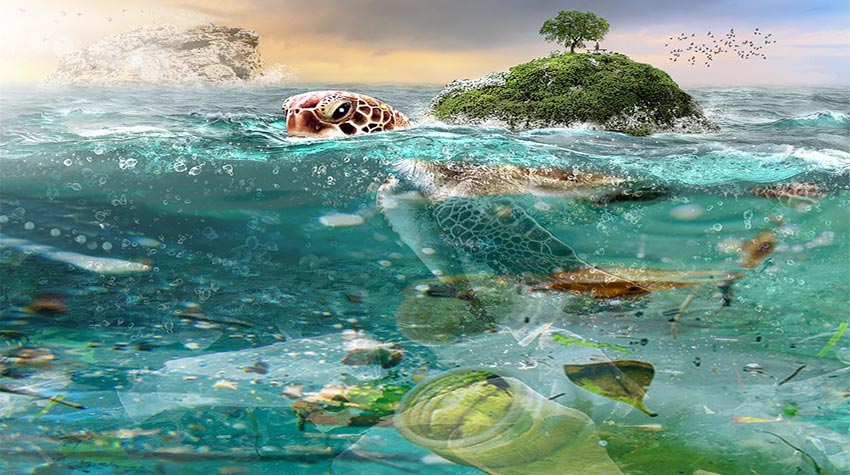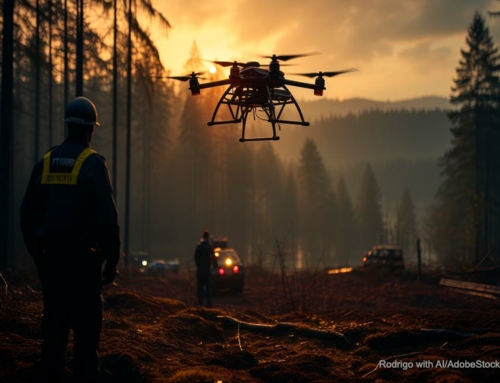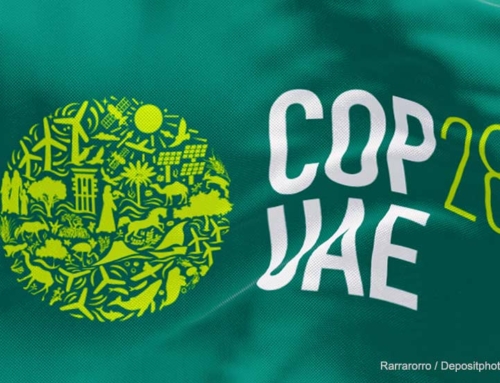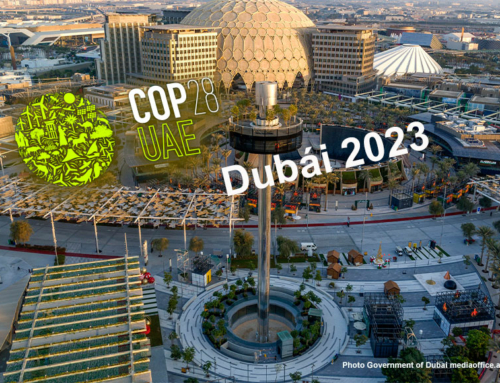Today Earth Day is celebrated, as it has been done every April 22, since 1970. This year the theme that has been chosen is that of contamination with plastics due to concern about the subject. Plastic pollution is the accumulation of products of this material in the environment, which negatively affects the lives of almost all species, including ours. The worst is that the largest proportion of accumulations come from single-use plastics, commonly called disposable. The magnitude and extent of the damage that pollution through bags, bottles and containers has caused and is causing to marine and terrestrial habitats is not small. In this short article we will talk a little about the history of plastic and after that serious pollution.
In the 1860s, Phetan and Collander, a billiard ball factory, offered a reward of ten thousand dollars for anyone who made one of those spherical ones with a material other than ivory. This curious note could be considered the beginning of the history of plastic, although two years before, Alexander Parkes had managed to create a similar material, but did not get to market it because its price is excessive. It was John W. Hyatt’s turn to pocket the 10 thousand offered by the manufacturer, by producing cellulose, making the Parkes material cheaper, which finally made the billiard ball, considered the first plastic article.
These events led to a long career of discoveries, creation of new materials and manufacture of amazing plastic products. Among the great milestones of this race we can consider: the celluloid, which for a long time reigned alone and its use multiplied in the form of combs, cutlery handles and lens frames. His fame reaches our days to be used as a metonymy of film or cinema. Much later came the vinyl acetate, manufactured on an industrial scale since 1939, a material that reminds us of our old and now revived LPs. In 1939 Nylon was born. 1942 brought us the first polyethylene and unsaturated polyester. In 1951 the high-density polyethylene came out and in 1970 the thermoplastic polyester.
The different types of plastics have been used to make a wide variety of objects. Plastic is undoubtedly the most versatile, common and inexpensive of the inventions made by us humans. But, just as its use has been varied and massive, the pollution that has caused and continues to cause it is also varied and massive.
Currently around 300 million tons of plastic are produced each year. If it were a transparent film, like the one we use to conserve food, the production of the last decades could cover the surface of the Earth. To have an idea of the growth of this industry, in the decade of 1950 they were used near of 15 million annual tons in average. In 60 years we have multiplied by 20 the annual consumption of plastics. Partly because of the almost tripling of the population in that period and partly because of the new plastics and their uses that have been developed. The most polluting plastics, by volume, are those used to make bags, bottles, wrapping material and other products for daily use in the home, commerce and industry. Of this amount, only about ten percent is recycled and reused correctly. The rest ends up in landfills, being the most worrying the pollution of rivers, seas and oceans, which greatly harms the aquatic fauna, in addition to seabirds.
Another problem to consider is the contamination by microplastics, which measure between 1 and 5 millimeters and are generally used in products for personal use such as toothpaste or skin care items. They can also be residues of degradation processes of plastic bags or the washing of synthetic clothing. The microplastics are made mainly of polyethylene, but also of polypropylene and other plastics. The contamination produced by these microparticles has been detected in oceans, lakes or rivers, but also in the soil and the atmosphere.
The contamination with plastics and other products is so fierce that they have been found in the ocean, in depths until recently unimaginable, as discovered by a British team, using specialized robots. “In the Mariana trench and the Kermadec trench, both in the Pacific Ocean, but separated by some 7,000 kilometers”, plastics sinks have been found in the most remote and hostile habitats, which withstand atmospheric pressures up to 1,000 times greater than those on the surface. A plastic bag was found in the Mariana Trench, at 10,898 meters, near the maximum marine depth on Earth. Humans have reached the most unthinkable levels with our waste. “Scientists at the University of Aberdeen (United Kingdom) have analyzed the fatty tissues of scavenging crustaceans, collected at both points, and have found extraordinary concentrations of polychlorinated biphenyls and polybromodiphenyl ethers, compounds used in household appliances and other electrical appliances.”
According to the UN, “the decrease in the production of plastic waste seems to be the only solution to this problem”. According to the high institution, a global monitoring network is needed to share the few available data on plastics contamination in deep waters. It also indicates that priority should be given to polluting impact assessment surveys in biological and ecologically important spaces that have high concentrations of plastic waste. To conclude, he recommends using ocean circulation models to determine how plastic travels from the earth to the depths of the sea.
Plastic Pollution is an enormous problem that does not seem to have a short-term solution. Some ideas Some ideas are very complicated to be carried out. The most common do not go from being too “soft” advice to consumers. In our opinion, there is very little impact that can have to solve the problem. The most important thing is that awareness of the issue has multiplied in recent years, perhaps not in the same proportion as the increase in the production of plastic objects and materials, but progress has been made. From SGK-PLANET we advocate concrete measures, with numerical reduction goals and more credible solutions to reduce pollution, as well as new technologies to decontaminate the waters and soils of the planet. It is the best gift we could give to the Earth in his day.
Sandor Alejandro Gerendas-Kiss
Sources:
ABC Pack. Enciclopedia. Historia de los plásticos. Retrieved from
http://www.abc-pack.com/enciclopedia/historia-de-los-plasticos/
Cadena SER. Ciencia y Tecnología. Microplásticos: un problema emergente. Retrieved from http://cadenaser.com/ser/2017/09/05/ciencia/1504609254_520631.html
Diario El País. Ciencia. Las fosas más profundas del océano tienen niveles “extraordinarios” de contaminación. Retrieved from https://elpais.com/elpais/2017/02/13/ciencia/1486999461_402271.html
Wikipedia. Plastic pollution. Retrieved from https://en.wikipedia.org/wiki/Plastic_pollution
United Nations Environment Programme. ONU environment. News and stories. Story. Single-use plastic has reached the world’s deepest ocean trench. Retrieved from https://www.unenvironment.org/news-and-stories/story/single-use-plastic-has-reached-worlds-deepest-ocean-trench







Leave A Comment